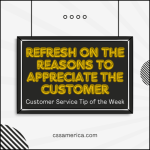Is it too much to ask to get some consistently good customer service from a fast food restaurant?
Well, according to the article McDonald’s customer service push irritates some franchisees, yes, it is too much to ask. Apparently McDonald’s corporate has acknowledged a need to improve its customer service, but some franchisees aren’t too happy. It’s not that the franchisees don’t care about customer service (I’m making a BIG assumption here with some franchisees), but they are first and foremost concerned with profits. And profits are driven by product margins, volumes, and efficiencies, right?
Apparently, McDonald’s corporate is also pushing the Dollar Menu (lower margins) and promoting offerings (such as wraps) that are less efficient to produce at the franchise level.
This issue is actually a microcosm of what a high percentage of businesses have experienced in the last 20+ years with the advent of rapid technological advances. The improvements in technology and ease of market entry for competitors have driven down prices in many industries, negatively impacting gross margins. Also, as customer service have expanded from primarily phone and face-to-face to include social media, smart phones, and other communication vehicles, the process of delivering customer service has become more complex.
So I feel the pain of the McDonald’s franchisee…really…I do. But at some point they need to look at customer service more strategically as a source of retention, additional revenues, upsells, cross-sells, profitability, and long-term viability and growth. If they did, they wouldn’t be focused as much on gross margin concerns. Instead they’d be focused on those things which they control which truly drive long-term client retention and growth. They’d make their own decision to focus more on customer service.
What do you think about the franchisees’ concerns and the state of customer service in fast food restaurants?
Interested in improving your company’s customer service? See more at our new website! http://www.cssamerica.com/





















